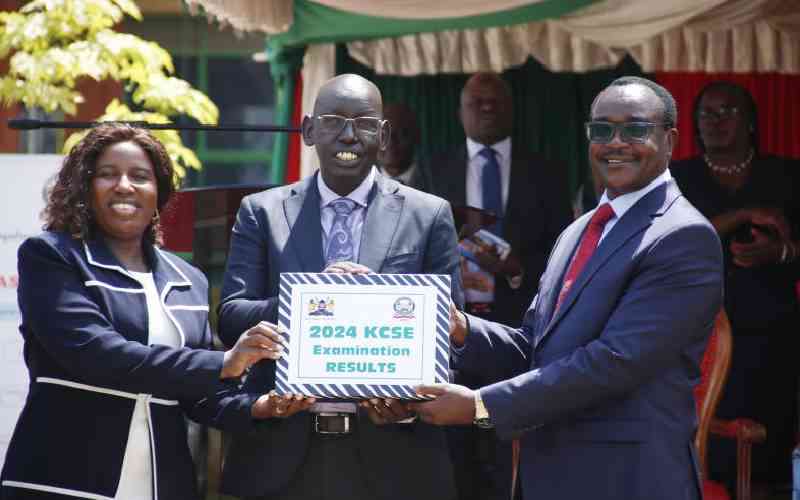John Oyuke
Former President Moi had a great line he often referred to when he was upset with political going-ons in the country - Siasa mbaya, maisha mbaya - which literally means bad politics amounts to bad life.
Paraphrased, the statement still rings true today. The opposite (good politics amounts to good life) is also true as illustrated by one comeback sugar miller in Coast.
This miller, now on the mend, has had obvious positive effects on the economy and surrounding communities.
Ramisi Sugar Factory had collapsed in the 1980s due to mismanagement and political interference.
The miller has since made a comeback with a sugarcane plantation ready for harvesting in under a year. In another 18 months, the milling plant will be up and running.
The factory, projected to process 3,000 tonnes of cane per day, will also produce 30,000 litres of ethanol every day and 18 megawatts of power — with 12 megawatts being fed into the national grid.
Supported families
Full revival of the firm now called Kwale International Sugar Company Ltd (KISCOL) is expected to cost some Sh16 billion.
Ramisi Sugar Factory was founded on a parcel of land in 1927 and was run by the Madvhani Group from 1947 to 1987 when it collapsed.
It employed over 3,000 workers and operated on land measuring 45,000 acres, offering support to 4,000 famillies who relied on cane farming.
President Kibaki announced the planned revival of Ramisi Sugar Factory in 2007. He said then that the government had signed a lease agreement with Kwale International Sugar Company Ltd to build a sugar-processing factory at Ramisi.
According to Kibaki, in the agreement, the Sugar company would develop a large-scale sugarcane farm covering 15,000 acres of land that will be excised out of the Ramisi farm.
The remaining part of Ramisi farm, totaling 27,000 acres, will be sub-divided into five-acre parcels to settle the identified and deserving squatters.
KISCOL is situated at the old Ramisi Sugar Company site in the current Msambweni District).
Stay informed. Subscribe to our newsletter
Earlier, the Government had invoked the compulsory acquisition clause and seized the Ramisi Sugar Factory land that changed ownership soon after it collapsed in the 1980s to facilitate the intended revival after a series of unfulfilled promises by the previous Government.
The then Lands Minister Prof Kivutha Kibwana said Sh64 million had already been paid out as compensation to a financial institution that had taken over the land after the original owners had defaulted in servicing a loan it had acquired from an Indian Bank.
The factory is seen as a major boost to the country’s sugar sector, which, according to some industry analysts, is ill prepared for the Common Market for Eastern and Southern Africa (Comesa) customs rules.
Currently, Kenya produces an average of 500,000 tonnes of white-milled sugar, against a demand of about 700,000 tonnes annually, creating a deficit of 200,000 tonnes.
Sugar deficit
This is the deficit the Comesa window has been servicing and the amount of duty free sugar entering the local market is expected to increase whenever the current safeguards elapse.
Planned reforms in the local sugar sector are also behind schedule. Before the expiry of the safeguards, the country is expected to privatise its five debt-ridden state-owned millers in the Western belt — Chemilil, Muhoroni, Miwani, Nzoia and South Nyanza sugar firms.
The sector is slowed down by ageing infrastructure, high production costs and long maturing cane variety with low sucrose content.
Experts say the natural challenges that work against Kenya’s competitiveness can be improved by focusing production in the favourable Coastal region.
"The Coast region is a good area to grow cane due to the shorter period it takes to mature and also the higher sugarcane sucrose content than in western," said Mr Richard Sindiga, the chairman of the Comesa Safeguards Committee in the Ministry of Trade.
When the government launched the project in 2008, it said that it would provide employment to about 15,000 young people on becoming fully operational and support more than 1.5 million people.
 The Standard Group Plc is a
multi-media organization with investments in media platforms spanning newspaper
print operations, television, radio broadcasting, digital and online services. The
Standard Group is recognized as a leading multi-media house in Kenya with a key
influence in matters of national and international interest.
The Standard Group Plc is a
multi-media organization with investments in media platforms spanning newspaper
print operations, television, radio broadcasting, digital and online services. The
Standard Group is recognized as a leading multi-media house in Kenya with a key
influence in matters of national and international interest.
 The Standard Group Plc is a
multi-media organization with investments in media platforms spanning newspaper
print operations, television, radio broadcasting, digital and online services. The
Standard Group is recognized as a leading multi-media house in Kenya with a key
influence in matters of national and international interest.
The Standard Group Plc is a
multi-media organization with investments in media platforms spanning newspaper
print operations, television, radio broadcasting, digital and online services. The
Standard Group is recognized as a leading multi-media house in Kenya with a key
influence in matters of national and international interest.







